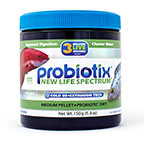
Quick Stats
What do these Quick Stats mean? Click here for more information
What do these Quick Stats mean? Click here for more information
Overview
The Panda Loach is a coveted newer arrival to the trade. As its name implies, the Panda Loach is a black and white patterned fish. Juvenile Panda Loaches exhibit loosely alternating black and white patterns. The adult color form of the Panda Loach sports a more mottled and cryptic pattern similar to the Dwarf Chain Loach. The body of the Panda Loach is streamlined which helps the Panda Loach navigate in moderate to strong currents with minimal effort. Panda Loaches are a smaller fish, growing to a length of only 2 inches. With proper care, this peaceful fish makes a great choice for freshwater hobbyists in search of unusual aquarium inhabitants.
Hailing from fast-moving streams in the mountainous areas of China, the Panda Loach requires an established aquarium that replicates conditions found in these environments. It is critical to maintain high water quality and aeration plus strong water movement to ensure the health of the Panda Loach. A fast-moving, oxygen-rich environment can be achieved through the use of powerheads. Avoid high water temperatures to ensure greater dissolved oxygen content. To create a natural habitat for the Panda Loach, aquascape with smooth river rocks of varying size and shape to replicate a tumbled streambed. Algae, bio film and other food items growing on or encrusting the river rock is an essential food source that offers beneficial foraging activity. A recommended minimum tank of 20 gallons should be provided to house Panda Loaches.
Like most other loaches, Panda Loaches are social fish that should be kept in groups to provide them security and social interaction. Panda Loaches are active and interesting to watch when kept in a small school of 5 to 7 loaches.
As mentioned previously, Panda Loaches should be offered a herbivorous diet, they will forage on algae and biological matter such as detritus and bio film that forms on river rock. Offer foods that sink to the bottom of the aquarium such as a high-quality veggie or spirulina flake food and sinking algae or spirulina pellets. Panda Loaches may accept brine shrimp and bloodworms, However, the majority of the Panda Loach diet should be herbivorous.
Approximate Purchase Size: 1/2" to 1-1/4"











